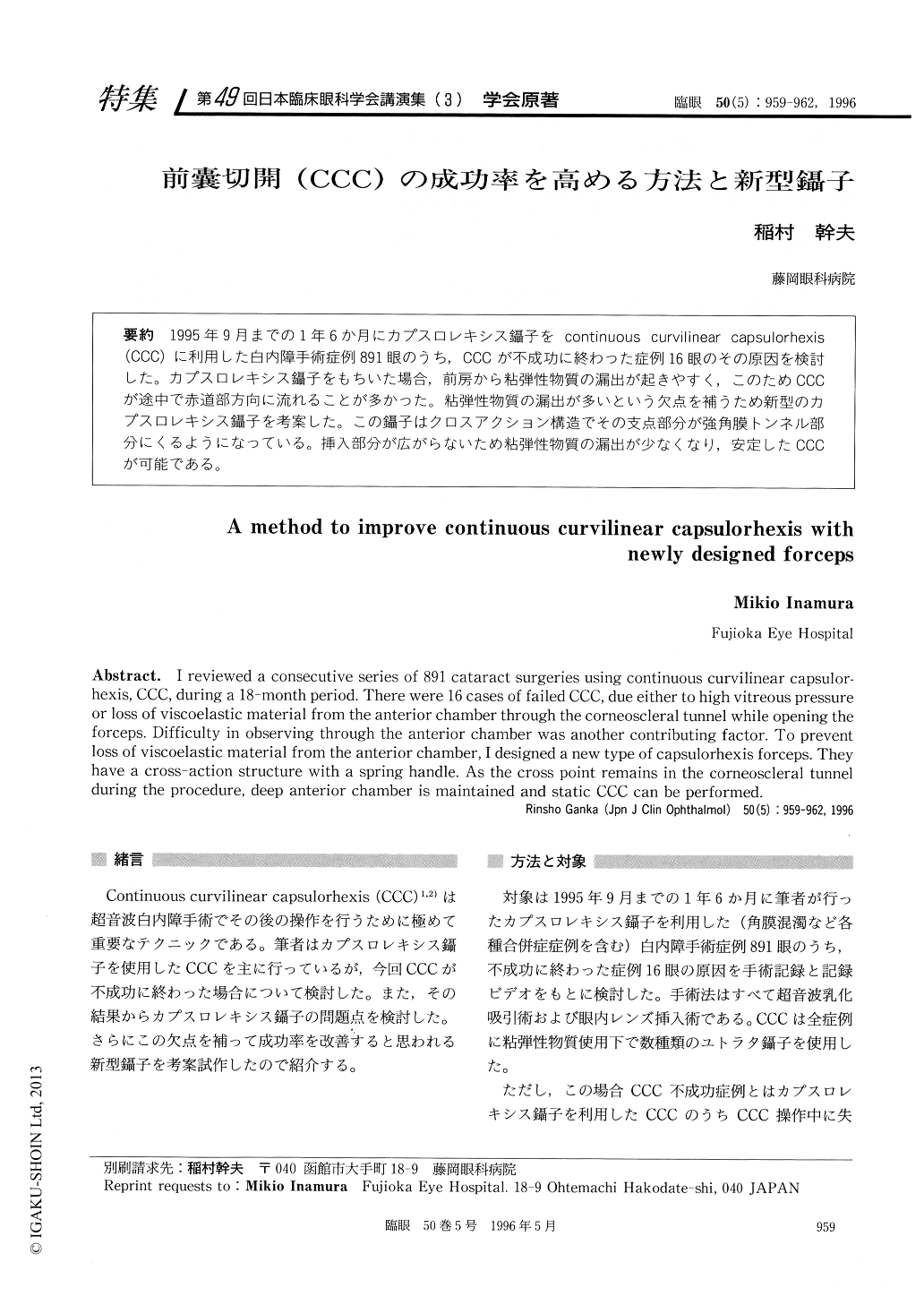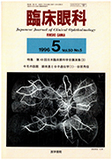Japanese
English
- 有料閲覧
- Abstract 文献概要
- 1ページ目 Look Inside
1995年9月までの1年6か月にカプスロレキシス鑷子をcontinuous curvilinear capsulorhexis(CCC)に利用した白内障手術症例891眼のうち,CCCが不成功に終わった症例16眼のその原因を検討した。カプスロレキシス鑷子をもちいた場合,前房から粘弾性物質の漏出が起きやすく,このためCCCが途中で赤道部方向に流れることが多かった。粘弾性物質の漏出が多いという欠点を補うため新型のカプスロレキシス鑷子を考案した。この鑷子はクロスアクション構造でその支点部分が強角膜トンネル部分にくるようになっている。挿入部分が広がらないため粘弾性物質の漏出が少なくなり,安定したCCCが可能である。
I reviewed a consecutive series of 891 cataract surgeries using continuous curvilinear capsulor-hexis, CCC, during a 18-month period. There were 16 cases of failed CCC, due either to high vitreous pressure or loss of viscoelastic material from the anterior chamber through the corneoscleral tunnel while opening the forceps. Difficulty in observing through the anterior chamber was another contributing factor. To prevent loss of viscoelastic material from the anterior chamber, I designed a new type of capsulorhexis forceps. They have a cross-action structure with a spring handle. As the cross point remains in the corneoscleral tunnel during the procedure, deep anterior chamber is maintained and static CCC can be performed.

Copyright © 1996, Igaku-Shoin Ltd. All rights reserved.


